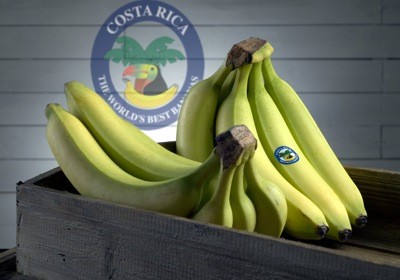Costa Rica News – If you love banana (banano in Spanish), better get your fill because they might not be around in the next five to ten years. According to plant pathologist Ioannis Stergiopoulos, from samples collected in Costa Rica in an area with a high level of fungicide applications, a fast-advancing disease compound, known as the Sigatoka complex, could be a lethal threat to the world’s banana supply.
 The Sigatoka complex is made up of three fungal diseases: yellow Sigatoka, eumusae leaf spot and black Sigatoka. Of the three, black Sigatoka poses the greatest risk to bananas grown annually in almost 120 countries.
The Sigatoka complex is made up of three fungal diseases: yellow Sigatoka, eumusae leaf spot and black Sigatoka. Of the three, black Sigatoka poses the greatest risk to bananas grown annually in almost 120 countries.
To understand how the fungi attack, Stergiopoulos sequenced the genomes of eumusae leaf spot and black Sigatoka, and then compared results with the previously sequenced yellow Sigatoka genome. To analyze the frequencies of molecular marker alleles and fungicide resistance within populations, four farms in Costa Rica were sampled during 2008 in San Pablo, Zent, and Cartagena, located in province of Limon, where bananas are grown at high density on large plantations and diseases are controlled by using chemical fungicides. A fourth farm, San Carlos, located in the province of Alajuela and is isolated geographically from the principal banana-production area.
Leaf tissue was collected from ten banana plants from each farm. What he found was the three fungal diseases not only shut down the immune system of the banana tree, but the metabolism of the fungi also adapted to match that of the host plant.
This means the fungi can produce enzymes to break down the plant’s cell walls to feed on its sugars and other carbohydrates.
“We have demonstrated that two of the three most serious banana fungal diseases have become more virulent by increasing their ability to manipulate the banana’s metabolic path ways and make use of its nutrients,” he told Digg.
“This parallel change in metabolism of the pathogen and the host plant has been overlooked until now and may represent a ‘molecular fingerprint’ of the adaptation process. It is really a wake-up call to the research community to look at similar mechanisms between pathogens and their plant hosts,” said the plant pathologist .
Stergiopoulos pointed out Cavendish bananas – those most commonly found in the supermarket – are grown from shoot cuttings, which means a disease capable of wiping out one plant could destroy them all.
“The Cavendish banana plants all originated from one plant and so as clones, they all have the same genotype – and that is a recipe for disaster,” he said.
Stergiopoulos suggested the ready availability of bananas gives them an “image problem” because consumers think the supply will never cease to exist.
In order to prevent the global banana industry from being wiped out in the next decade, farmers need to make 50 fungicide applications to their banana crops annually. “Thirty to 35 per cent of banana production cost is in fungicide applications,” he said.
“Because many farmers can’t afford the fungicide, they grow bananas of lesser quality, which bring them less income.”
The discovery was reported online in PLOS Genetics. The research paper is dedicated to the memory of Mr. Romano Orlich MSc—deceased December 24, 2015—previous president of the National Banana Cooperation of Costa Rica (Corbana), who greatly motivated interest in banana research.
From QCostaRica

